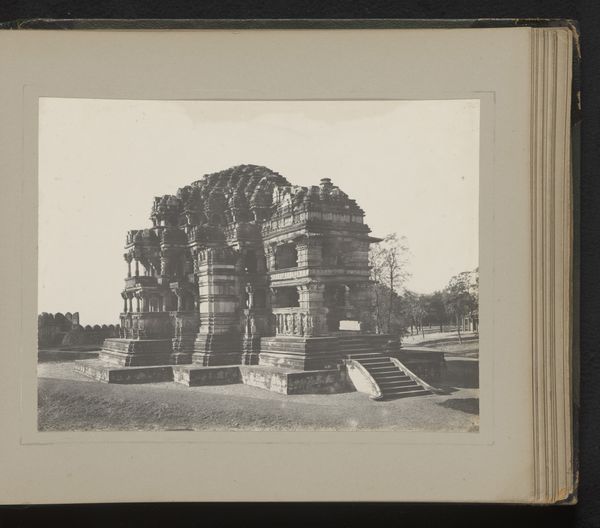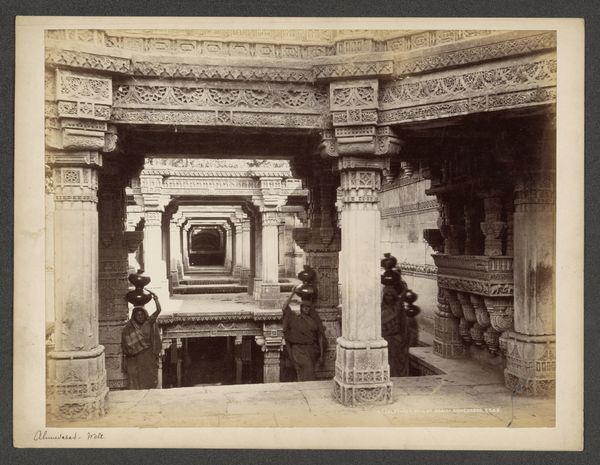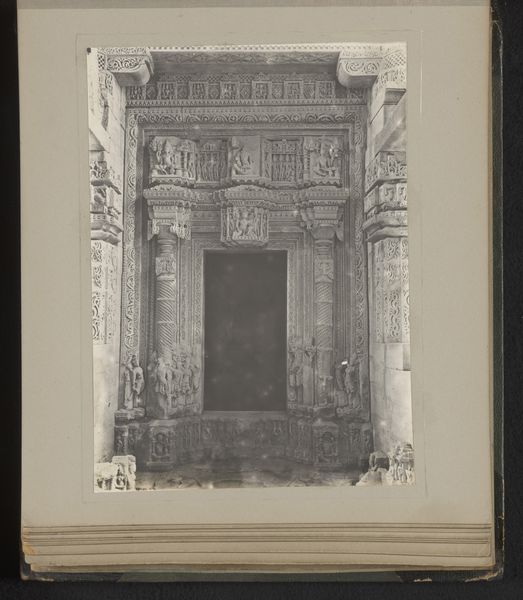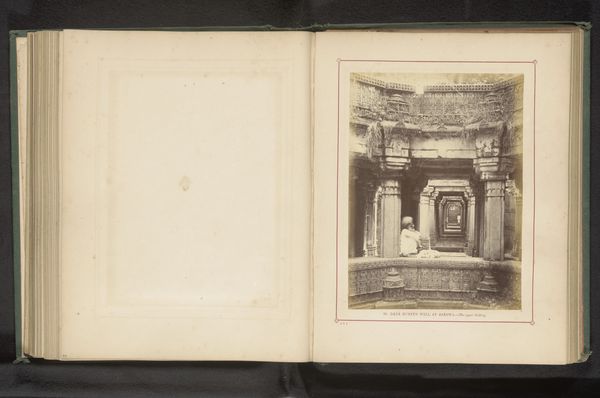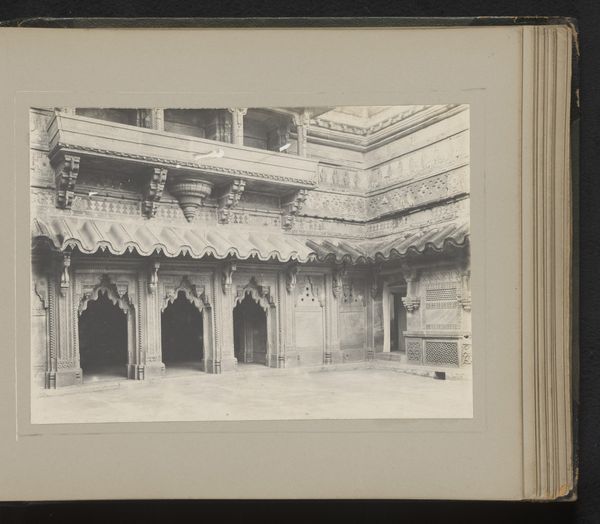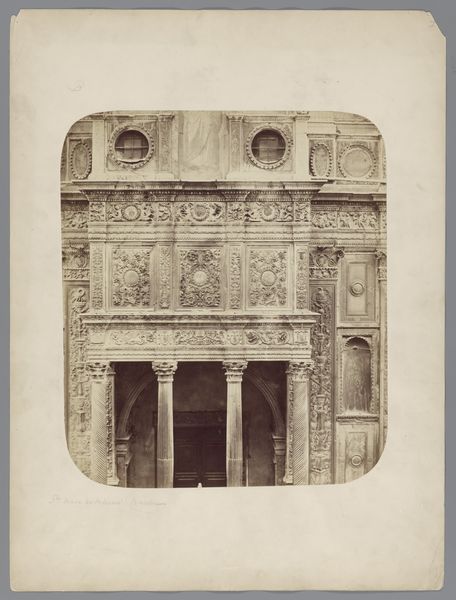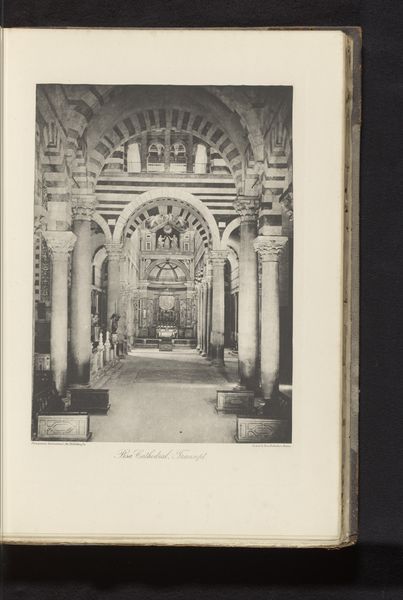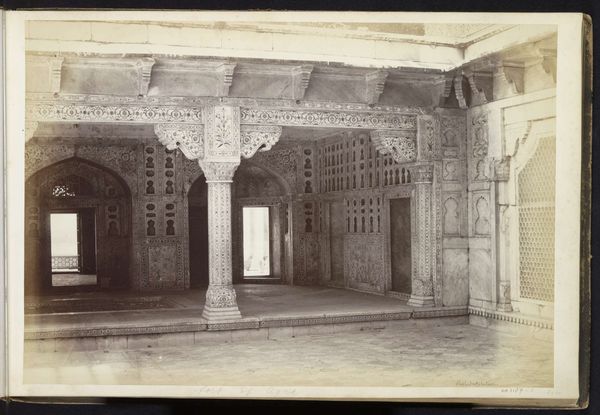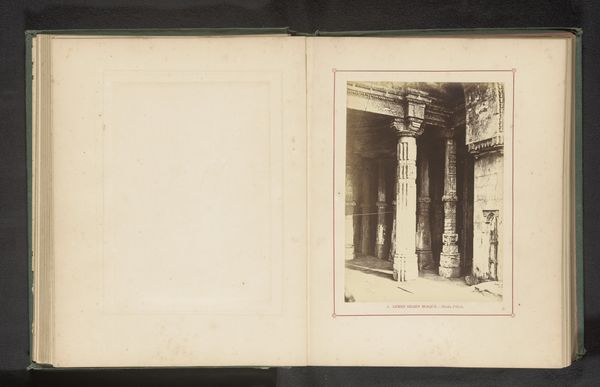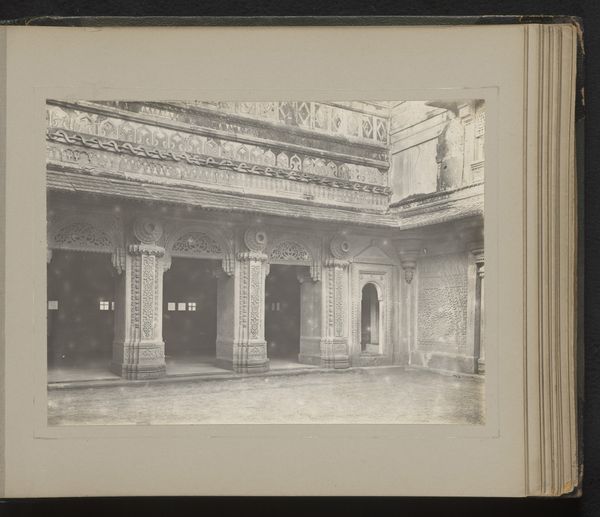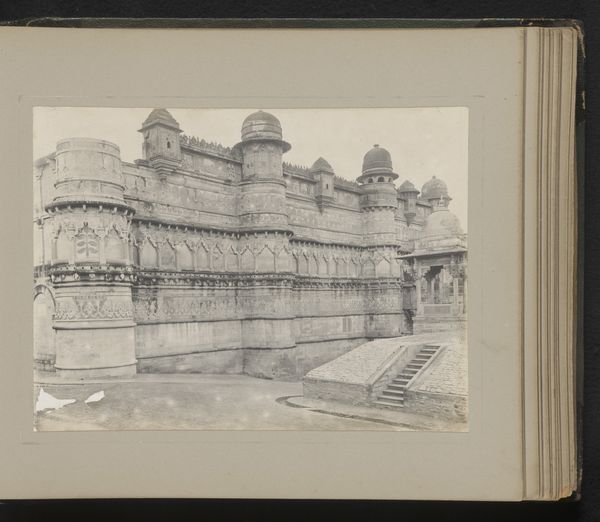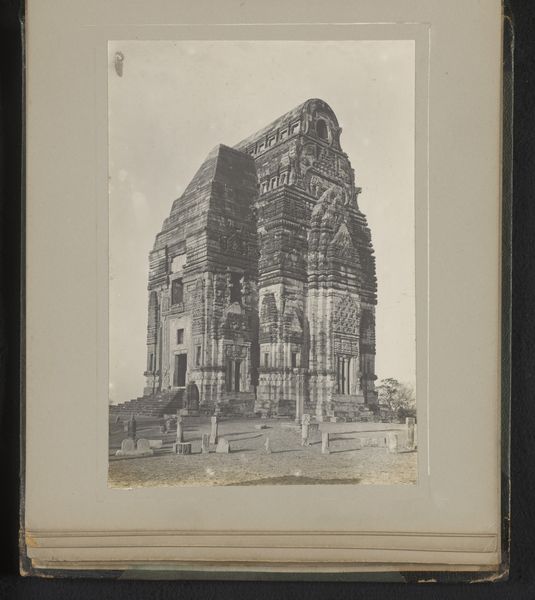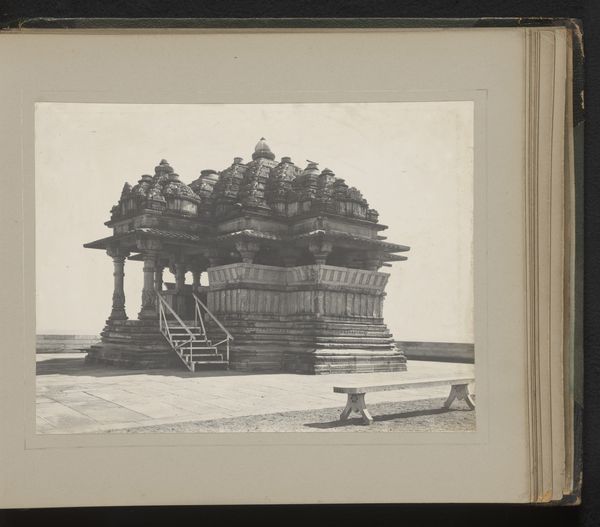
photography, gelatin-silver-print
#
asian-art
#
landscape
#
form
#
photography
#
geometric
#
ancient-mediterranean
#
column
#
gelatin-silver-print
#
line
Dimensions: height 150 mm, width 203 mm
Copyright: Rijks Museum: Open Domain
Curator: Let’s take a moment to consider this gelatin silver print by K.H. Mawal, titled "Decorated Columns at the Great Sasbahu Temple," circa 1900. Editor: My immediate impression is one of awe; it’s imposing. The repetitive, intricately carved columns create a rhythm that draws the eye, yet it also feels confining, like being caught within the gears of something immense and ancient. Curator: Indeed. I'm fascinated by what this image suggests about the patronage of art and architecture in colonial India, a context profoundly shaped by hierarchies of power, caste and gender that influenced artistic representation. The British administrators’ view on cultural heritage would play a critical role in this type of image-making. Editor: Absolutely, but beyond that, consider the gaze of the photographer. What’s excluded? Is the artist using the photographic process to assert cultural superiority, framing an orientalist vision, or documenting and celebrating a powerful tradition? We should investigate its reception at the time, considering who viewed it and with what cultural baggage. Curator: Very astute point! Furthermore, analyzing these photographic prints can reveal much about how architectural spaces became tools for societal organization. Temples held roles within systems of control and cultural transmission and visual communication, and were also critical components for preserving a complex cultural memory. Editor: And it’s not just about looking back, but how these monuments and their representations shape our understanding of cultural heritage *today*. Who decides what's worth preserving, and what stories do these structures continue to tell—or silence? The temple as a monument—in this black-and-white depiction of power relations. Curator: I am inclined to agree with you, it leaves a striking visual testament to this relationship of the time. But beyond the power relations it illustrates the beauty of detail with a wonderful sense of balance through architectural forms and linear repetitions. Editor: Exactly! The print offers a glimpse into that historical moment but also encourages critical thought about cultural identity and societal structure within Indian art today. Curator: In a sense, the image is both artifact and prompt; a key that unlocks questions surrounding India's intertwined socio-political and cultural dimensions in relationship with colonialism.
Comments
No comments
Be the first to comment and join the conversation on the ultimate creative platform.
